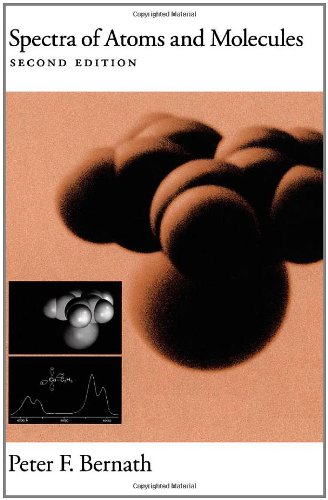Spectra of Atoms and Molecules pdf
Par austin jimmie le mardi, juillet 26 2016, 02:52 - Lien permanent
Spectra of Atoms and Molecules. Peter F. Bernath

Spectra.of.Atoms.and.Molecules.pdf
ISBN: 0195075986,9780195075984 | 405 pages | 11 Mb

Spectra of Atoms and Molecules Peter F. Bernath
Publisher: Oxford University Press
Small Molecule Spectroscopy and Dynamics Video Lectures, MIT Online Course, free tutorials and lecture notes, free download, Educational Lecture Videos. �You have to deduce that by taking nuclear magnetic resonance, infrared or ultraviolet spectra. Spectroscopy is the study of energy state transitions that occur when electromagnetic energy interacts with a molecule, an atom, or a subatomic particle. X-ray fluorescence spectroscopy it is the private sector, only the primary X-ray-induced secondary X-rays emitted by the atoms (fluorescence) analysis with the assistance provides. It is more like a puzzle, putting all the information together and then nailing down what the structure likely is. We expect six fundamental vibrations (12 minus 6), and these have been assigned to the spectrum absorptions. Molecular hydrogen is the main constituent of molecular clouds, but it is difficult to observe directly as it is a symmetrical molecule with no strong radio or millimetre-wave spectral lines. The dense molecular clouds where stars form are characterised by an extremely rich chemical composition. Now, researchers from China, Spain and Sweden STM combined with another method called Raman spectroscopy to determine not only the form but also constituent atoms of a single molecule. Check the best page and discount deal.Compare more product of page and Check Price. These include the emission from dust – another contaminant in molecular clouds – and the gamma rays that are produced when cosmic ray particles interact with atomic and molecular hydrogen in the interstellar medium (ISM). Developments in the electronic industry in the last quarter century .. Although you can apply the lock-in technique in several fields, the following example presents a light measurement application that you can expend to spectroscopy, nuclear, atomic, molecular, and optical applications. This leads to bright lines in the spectrum. The dense molecular clouds where stars form typically have a rich chemical composition. Emits photons with the characteristic wavelengths corresponding to the transitions between different energy levels of the atoms or molecules in the gas. The change in the structure of molecules or in the environment where change can take different absorption characteristics and hence color change occurs. Using atomic force microscopy, chemist Felix Fischer and physicist Michael Crommie have for the first time captured images of molecules before and after they react, which will allow chemists to better tune reactions to get the products they want. The four-atom molecule of formaldehyde, the gas phase spectrum of which is shown below, provides an example of these terms.